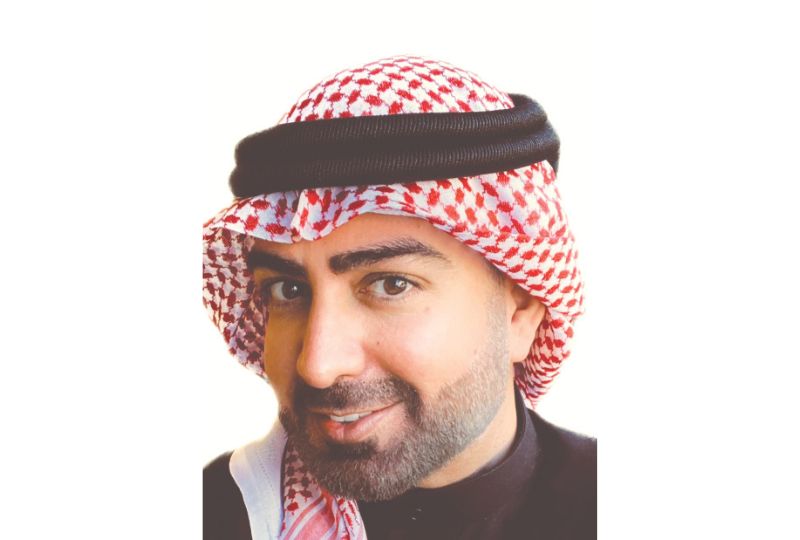Radio has always held a special place in my heart. After two decades devoted to radio, combining creative passion with hands-on management across the UK, Dubai and Bahrain, I’ve seen firsthand its power to connect, inspire, and sell.
Yet, in a world dominated by social media, podcasts and streaming platforms, many wonder – is radio still alive?
The answer is, yes. But not by chance. For radio to thrive, it must evolve with focus, creativity and commercial intelligence.
Making radio profitable today requires a new success formula – strategy meets creativity.
The key lies in strategic targeting, creating demand, and curating compelling flagship shows that go beyond borders. Modern radio must think like a business, act like a brand and perform like entertainment.
The era of four-hour DJ chatter about celebrity gossip or Taylor Swift’s latest single is long gone.
Today’s listener is intelligent, impatient and spoiled for choice – if we don’t respect their time and intelligence, they’ll switch to Spotify in seconds.
A successful station is built on three key pillars: creative, high-value content that informs, entertains and sparks conversation; a digital-first reach that seamlessly integrates FM with social media, podcasts and streaming platforms; and flagship formats that serve as destinations – shows that people plan their day around and can access on demand, anytime, 24/7.
Equally important is the pursuit of quality entertainment – content that educates, inspires and entertains without compromise. Audiences crave authenticity, depth and discovery.
We are all blessed with 24 hours a day, every minute of airtime is a valuable asset. Every show, every segment and every idea must serve a bigger purpose: to be monetisable, measurable and meaningful.
Creativity should inspire but also convert into revenue – because great content not only entertains, it sustains the business behind it.
Alongside international hits, regional artists and creators deserve a platform too; they bring identity, emotion and originality that connect communities and elevate local culture to global ears.
Catchy music aside, think medical, tourism, business, sports, lifestyle and wellness – subjects that blend community relevance with commercial opportunity.
Imagine ‘Doctor In The House’ brought to you by a hospital group, ‘Business Unlocked’ sponsored by a leading bank, or ‘The Sports Majlis’ powered by a top gym or fitness centre.
That’s not just content, that’s strategy meeting sustainability.
To be successful today, radio must create demand rather than wait for it.
The audience of tomorrow doesn’t just listen – they engage. They expect value, and they can abandon mediocrity with one swipe.
That’s where social media becomes the modern amplifier. Live polls, interactive Q&As, behind-the-scenes moments and listener participation turn passive listeners into active community members. It’s not about going viral – it’s about earning trust.
Respect the audience’s intelligence and they’ll reward you with loyalty. A listener who feels part of your story is a listener who stays.
Creating stars and building brands has always been at the heart of radio’s success, relying on its unique human connection as its secret weapon. People tune in for people.
To truly stand out, stations must invest in talent: nurturing new voices, developing distinctive personalities, and elevating presenters into stars. The future of the industry depends on it. I’m confident the region’s next Steven Bartlett is out there waiting for the chance to be trained, supported, and unleashed.
This isn’t about the ‘disc jockey’ stereotype of the past, it’s about storytellers, hosts and thought leaders who bring credibility and character to every conversation.
Presenters must be relatable, professional, charismatic, versatile and confident – able to discuss business one minute and football the next.
When talent shines, advertisers follow. When shows become events, sponsorship grows organically. That’s how radio moves from draining costs to a commercial profit centre.
Radio today is borderless and it is no longer confined by FM. With digital platforms, podcasts, and smart speakers, it can reach the world. But to do that, content must travel.
Flagship shows should have universal appeal – lifestyle, entertainment, or sports formats that resonate across cultures. When a show from Bahrain is streamed in London or Dubai, radio transforms from local to global voice. That’s how reach and monetisation expand.
Technology should be seen as an ally, not a threat. AI and smart devices aren’t the end of radio – they’re its next chapter. Imagine a radio show hosted by AI that sounds human – what a hit that could be!
Advertisers would surely be intrigued by such innovation. Artificial intelligence can personalise playlists, automate scheduling and enhance listener engagement, but it should never replace creativity.
The magic happens when AI efficiency meets human emotion.
With smart speakers, cars equipped with built-in streaming and mobile apps, radio can be everywhere – not just in your car or kitchen, but in your pocket, on demand, and on every screen.
True transformation starts with visionary management.
Modern radio leadership must combine sharp strategic thinking and creative instinct with solid financial and business acumen, mastering the delicate balance between programming for people and driving profit – leading their teams with clarity, courage and a bold vision that drives sustainable growth and lasting success.
Sales and marketing must evolve from selling airtime to creating demand.
They need to be brand ambassadors who believe in the content and sell through compelling storytelling and strategic relevance.
It’s not about pushing rack rates, but delivering creative solutions that meet client goals, engage advertisers and sponsors, and drive repeat business.
New revenue models are essential: branded content, exclusive podcasts for sponsors, live event tie-ins and digital collaborations.
The stations that master content monetisation, not just ad sales, will define the next era.
The verdict is clear: radio is alive and hungry. It isn’t dying – it’s evolving. Its heartbeat is creativity, its lifeblood is relevance, and its future depends on innovation.
When managed strategically – with clear positioning, engaging shows, and a digital ecosystem that extends beyond FM – radio can once again become one of the most powerful and profitable media platforms.
Because at its core, radio has what every new platform tries to manufacture: human connection, credibility and community.
And that’s something no algorithm can replace.


&uuid=(email))